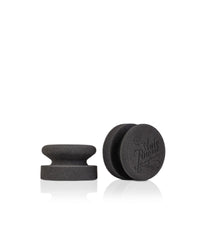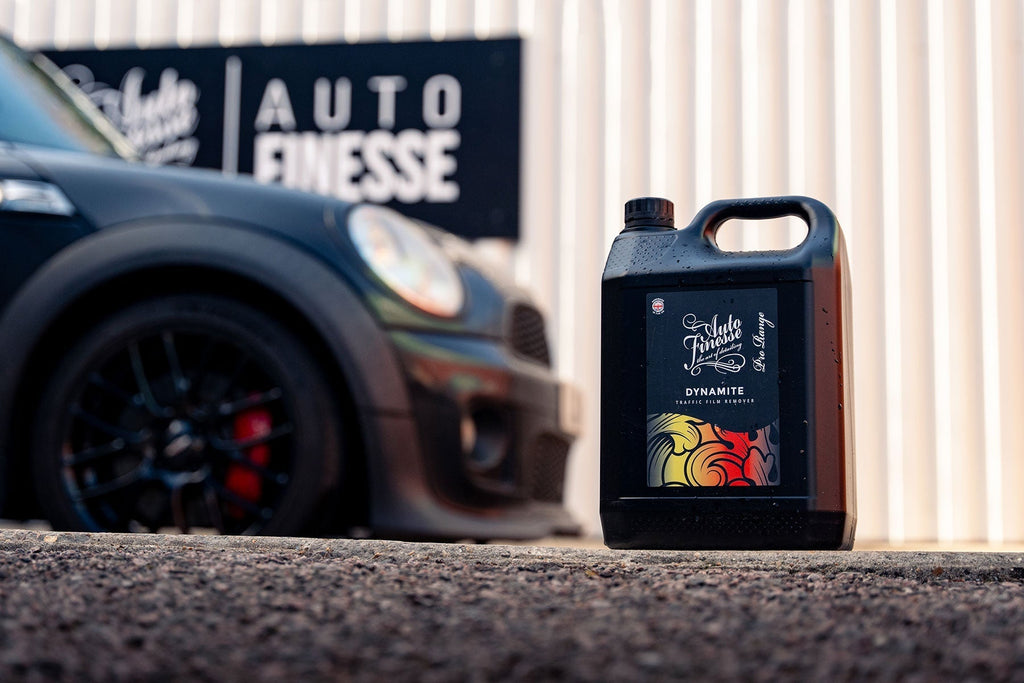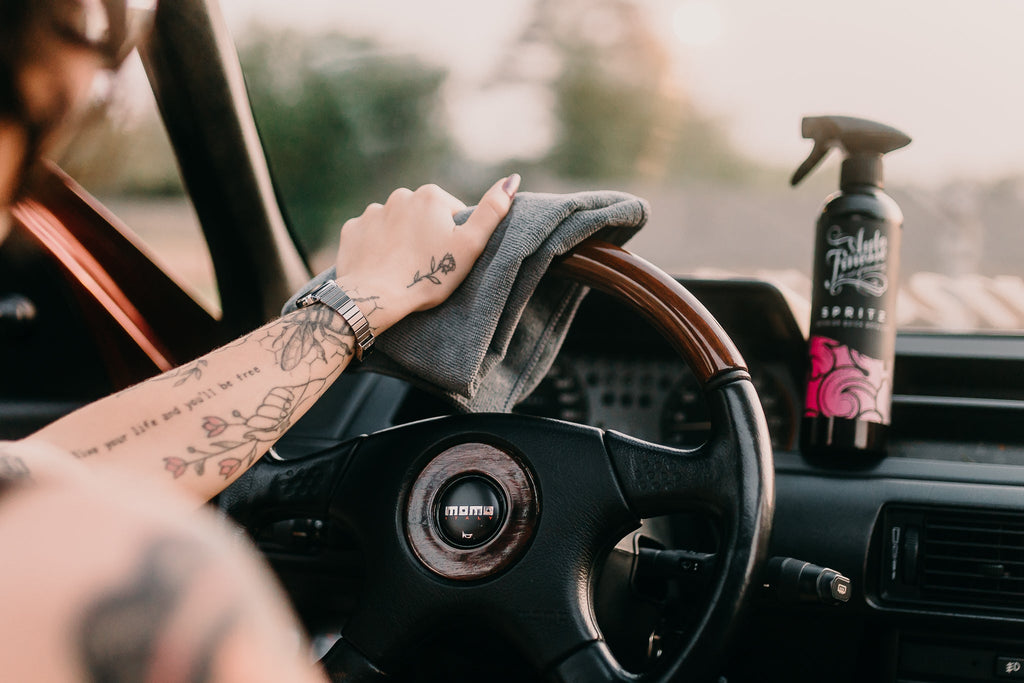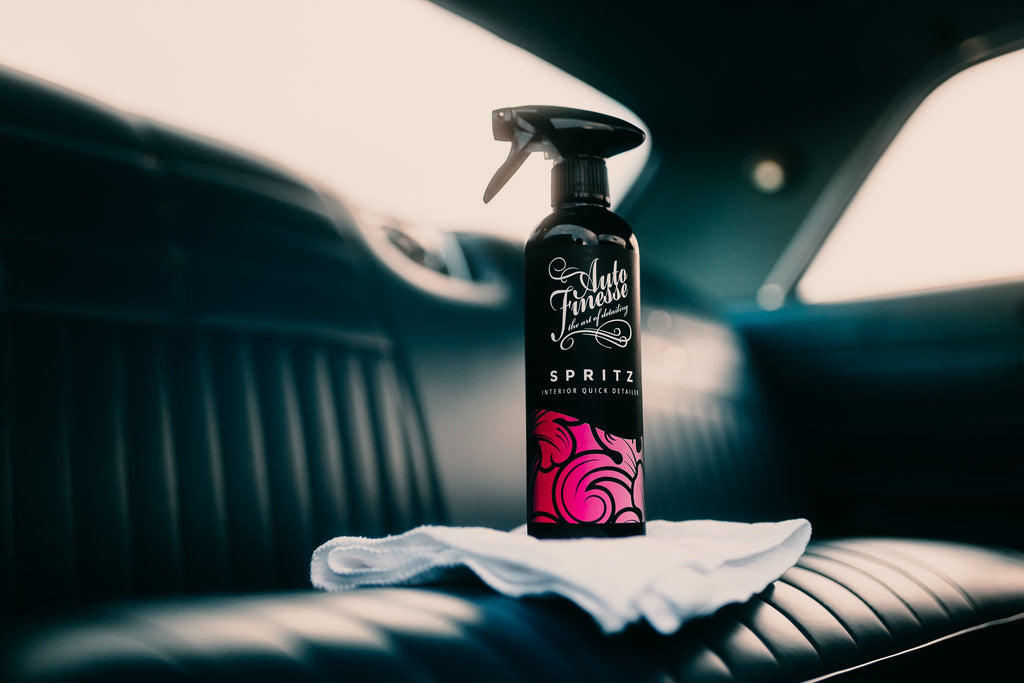Essence
Essence All Round Car Wax
- All round hard wax for all paint types and vinyl wraps
- Bright, crisp reflections with a warm high-shine finish
- 40% Brazilian T1-Grade Carnauba by volume
- Contains advanced gloss-intensifying oils and synthetic polymers
- Developed for quick and easy application
- Protects surfaces for up to 3-months
- Blueberry scent
Full shipping details can be found here
🇬🇧 UK SHIPPING
| SERVICE | COST |
| Express Shipping (next working day) | £6.95 |
| Economy Shipping (2-3 working days) | £4.95 |
| FREE Shipping (3-5 working days) | £0.00* |
| Saturday Shipping | £6.95 |
| Collect in Store (Harlow) | Free |
*Our free shipping service incurs a £50 minimum spend.
*If your post code begins with one of the following: AB31-AB56, IV1-IV63, KW1-KW14, PA21-PA38, PH4-PH50, BT, HS, IV41-IV56, KA27-KA28, KW15-KW17, PA20-PA78, PH42-PH44, ZE, IM, GY, JE a £100 minimum spend applies before free shipping is available.
🇪🇺 EU SHIPPING
Please visit our dedicated EU store to take advantage of the fastest and most cost effective options for you.
www.autofinesse.eu.com
🇺🇸 US & INTERNATIONAL SHIPPING
| SERVICE | COST |
| FREE International Shipping (3-5 working days) | $0.00 |
| Express International Shipping (2 working days) | From $30.00 |
*Our free international shipping service incurs a $150 minimum spend and is applicable to the US only.
Our International shipping services are based on the weight or your order, which is calculated at the checkout. Unless specified the rate EXCLUDES any import taxes, charges, duties or clearance costs.
CUTOFF TIMES
If you order by 3pm GMT, we'll process your order the same day. After 3pm GMT, we'll process it the next working day, adding 1 working day to the expected delivery date.
If you place an order on non-working days (Saturday or Sunday, or bank holiday), please add 1 working day to your delivery date.
RETURNING AN ITEM
You can now do this free of charge with our simple DHL returns service. You may return items free of charge for a full refund up to 14 days from receipt of goods. Further information about refunds can be found in our Returns policy
Returns policy
Long lasting protection
Hand-crafted in Great Britain, Auto Finesse® Essence Carnauba Car Wax is a luxurious blend of the finest natural ingredients. This premium wax boasts a high concentration of 40% T1 Grade Brazilian Carnauba, complemented by synthetic polymers and gloss-intensifying oils.
Harnessing the power of nature, Essence provides a durable barrier against the elements, repelling water and protecting your paint from UV fading, acid rain, bird droppings, and other environmental pollutants. Enjoy effortless application, a delightful blueberry fragrance, and up to three months of lasting shine and protection.
FAQ
Popular questions from our customers
-
In terms of extra gloss and added protection, yes, adding a second coat is always beneficial. What this will do is build up more of a physical barrier to the elements and further level the optical finish to make paintwork appear even deeper and glossier. A wax layer that's double the thickness will proportionally increase these characteristics making it a great way of getting your paintwork to look its absolute best - essentially adding more warmth and depth - which is a great pro-tip for show cars and other pampered vehicles. So, why not just add a single thick layer in the first place? Well, it's because the wax has to bond to the surface, and only the thin layer that makes contact with your paintwork can successfully bond. Laying on a thick application simply means that you'll be buffing off most of the wax - all the wax that hasn't bonded - wasting your car wax, and your cash. Conversely, once that first layer has cured, another thin layer can easily bond on top of the original wax layer, building up the protection and shine. With our Signature Hard Waxes, just half a turn in the tin with a Waxmate XL or Wax Spot Pad is more than enough for a whole large panel, and the goal is always to get your wax on there as thinly and evenly as possible, while ensuring complete coverage. We recommend leaving the vehicle for 3-4 hours for a hard wax to cure (or 2 hours when using Radiance Carnauba wax, which is classed as a liquid wax) before adding your second coat. For more on wax application, and some top tips for the most effective surface preparation, see our full guide: Getting The Most From A Hard Wax.
-
The difference is in the specially developed microfibre weave, which offers slightly different physical characteristics to make the Micro Tweed Buffing Towel the ultimate cloth for use with car waxes, such as the premium protection products you'll find in our Signature Hard Wax Collection. This tweed construction not only gives the Micro Tweed a significantly higher surface area for increased garb on residues, but it also leaves special air pockets in the material that are ideal for catching and locking away excess wax deep within the cloth. The idea here is to prevent wax clogging, which is especially common when too much product is applied to the vehicle. Keeping these wax residues in the cloth, and ultimately away from surfaces, makes it quicker and easier to safely buff your paintwork, along with other sensitive areas, without marring the wax layer underneath.
-
Aside from making sure surfaces are clean and free of contaminants, this always depends on the circumstances. Are you topping up wax protection from a previous full detail or adding wax protection for the first time. This is important because, first and foremost, polishing will remove any protection layer, the reason why we don?t use abrasives during routine maintenance, and only polish paintwork when it's absolutely necessary. In this case of maintenance, we'd assume that any paint correction needed had been carried out before adding the first round of wax protection. When it comes to adding wax protection for the first time, we'd always recommend getting surfaces to the best possible level of refinement first. Although it's wholly possible to apply a wax to car with swirly paint, and it will still bond, protect from grime and offer extreme water behaviour and beading, what it won?t do is hide any major defects, so essentially, you'll be locking these in. Pure waxes are non-abrasives, so they're not designed to correct or obscure defects in the surface underneath, they are purely for protection and to add extra gloss. So, for the best results, we'd always recommend correcting or enhancing any paintwork you're not completely happy with the condition of, and fully preparing the surface, before applying any protection layer. The advantage with waxes over ceramic coating in this instance though, is that you don't have to consider the chemical bonded needed for an SiO2 coating to adhere, so you can utilise any of our correction products and cleansers depending on the finish you require regardless of if they already contain waxes and paint glazes. This includes our Revitalise V2 System Compounds, One Step All-in-One Compound, Tripple All-in-One Polish and Rejuvenate Paintwork Cleanser. For more information, and some top tips on preparing your vehicle for a hard wax, see our full guide: Getting The Most From A Hard Wax.
-
The main difference comes in the way these protection layers bond to surfaces. A wax (like those in our Signature Wax Collection, along with Radiance Carnauba Creme and Mint Rims Wheel Wax), will physically hold on to the top layer, creating a strong bond and leaving a layer of wax protection that's separate to the paintwork. Waxes can be durable from a few months, right up to 8-months or so, depending to the content of hard wax and other ingredients in the blend. A ceramic coating however, will chemically bond to the surface, essentially becoming an integral part of the top layer, and this is the reason why coatings tend to have more durability, because these molecular bonds are more resilient to chemicals and abrasion, making them more difficult to remove. The Si02-based coating in our Paintwork Protection Kit for example has a durability of up to 12-months for exactly this reason. It's also explains why a ceramic coating cannot be applied over the top of a wax layer, because the wax will block the chemical bonding process, but a wax can be applied over a (fully cured) ceramic coating, because it will happily bond to almost any surface. Both types of protection layer are impermeable to moisture, make your paintwork appear deeper and shiner, and ensure that the vehicle is easier to clean the next time around, simply because the grime won't stick. When it comes to choosing between the two, Waxes tend to be slightly easier to apply, and ceramic coatings tend to offer more hardy protection for daily drivers, but the truth is that, for the most part, it's all down to personal preference, especially when it comes to looks. Ceramic coatings are man-made and engineered to be perfectly clear, allowing light to pass through and back to the eye completely uniformly. Hard waxes have a certain amount of natural impurities that bend and soften the light as it comes back to your eye, this is what gives them their trademark warm glow.
-
Yes. One of the key attributes, aside from adding a physical layer of protection, is that a wax bonds to level the optical finish significantly more than a bare paint layer. By this we simply mean that waxes are capable of making your paintwork appear to be deeper and glossier by smoothing the surface to which they're applied and modifying how it looks to the eye. On a microscopic level, the top layer of your gloss plastics and paintwork - whether that's the topcoat on older vehicles or the lacquer in more modern 2-stage paintwork, isn't completely flat, even when it's been polished. It will contain tiny ruts and recesses that may be essentially undetectable on their own, but will diffract the light bouncing off if it on different directions. Unlike swirl marks and scratches the effect is only slight, but it does change the way the surfaces is perceived in terms of depth and gloss. When a wax is applied over the top it fills any minuscule ruts and recesses to leave a layer that can be buffed to be smoother than the paint surface itself, in a way you can liken this to plastering a wall, only with a clear plaster. What this does is create a layer that enables light to bounce back to the eye more uniformly and this is what tricks the eye (and the brain) into thinking the paintwork is significantly deeper and shinier than the relatively thin layer of wax that's applied on top.
-
The main differences between hard waxes and liquid waxes, aside from the obvious, comes with finding a balance between the durability of the protection layer and the ease of application. A liquid wax, a category that includes spray-on products like Glisten Spray Wax, as well as more viscous cream-like liquids such as Radiance Carnauba, will be developed to be extremely quick to apply to surfaces and easy to buff away any residue, but will always be a little less durable than a hard wax. This is because, the thinner the liquid has to be for ease of application, the less solids can be contained in the solute. These solids - essentially the natural wax content used to form the protection layer - are dispersed and suspended throughout the solution, which will contain a solvent base designed to evaporate off, leaving behind the protection layer. The more solid material you can cram into the solution, the more viscous the liquid, until eventually it's mostly solids, giving you a hard wax. Along with being easy-to-use, liquid waxes can still offer great durability though, Glisten gives around a month of protection, while Radiance will last for up to 3-months. But our hard waxes, while they may take a little more effort to apply, can give protection for anything between 4-8 months depending on the specific blend.
-
It's important to look after any previously-applied wax layers as much as possible during routine maintenance, and the same rules apply as for looking after paint, lacquer and other sensitive exterior surfaces on any other detail. Wax protection is simply a top layer that's impermeable to water molecules and it protects paintwork by installing a physical barrier, and by stopping grime (and water) from sticking, this in turn always makes maintenance washing easier. However, it doesn't mean that the wax (and the paintwork underneath) can't be damaged through improper wash techniques. Carrying out safe maintenance, including a thorough pre-wash, is crucial to stop heavy grit and grime from being rubbed in and abrading the wax or the paintwork, essentially stripping your wax and inflicting defects in the paint. Using wax, sealant and coating-friendly pre-wash products, such as Citrus Power Bug and Grime Remover and Avalanche Snow Foam will also help to prevent damage to coatings because they don't contain harsh acidic or alkaline cleaning agents that may strip protection. As for the shampoo you use in your two-bucket wash,... Well, that's crucial, too. Our pH neutral Lather Car Shampoo is the ideal choice here, as it will never damage any previously-applied coatings, regardless of if they're waxes, sealants or ceramic coatings. At this point of course, you can simply eave the vehicle, or choose to top up your protection for extra durability and shine. You can use your original hard wax or, for the ultimate in speedy details, utilise Radiance Carnauba, or Glisten Spray Wax. Do not use abrasive products during maintenance, though, as these will remove the entire protection layer, requiring reapplication of your wax.

![]() NEED HELP CALL +44 (0)1279 912 912
NEED HELP CALL +44 (0)1279 912 912
We are here to help with all your questions.*
How-To Use
1
Ensure bodywork is clean and free from contamination prior to application.
2
If necessary treat paintwork prior to application with a pre wax cleanser.
3
Apply wax sparingly to the entire vehicle using a foam applicator pad.
4
Leave to cure for 10 minutes before removing the residue with a clean microfibre cloth.
5
Leave at least 1 hour before applying a second layer of wax.
6
If necessary re-buff the surface with a fresh clean microfibre cloth.
Fast, Free Shipping
Hassle-Free & Fast Options
Easy, Free Returns
Simple Free Returns Process
1st Class Support
Expert Advice & Support
Made In The UK
UK-Based Production
Pair this with
×












